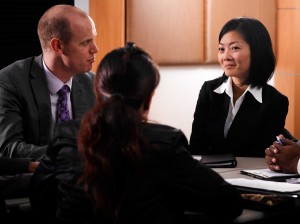Business calls for increase in skilled migration

The federal government is coming under increasing pressure from one of its key supporters to raise Australia’s annual migration intake by more than 15%.
The latest call for more migrants has come from the Australian Industry Group (AIG) which says it has identified an urgent need for more skilled workers citing signs of an upturn in residential and commercial construction.
A 15% increase would see the current migration level rise from 190,000 to 220,000 per year.
AIG Chief Executive Innes Willox says increasing and persistent skill shortages across key parts of the nation’s economy means increased immigration should be considered as a solution.
“The Australian workplace productivity agency has indicated that Australia will need an increase of 2.8 million people with quite specific skills over the next decade to fill the gaps,” Mr Willox said.
“We need to find ways to fill those gaps and obviously we can train our own but the quickest stopgap measure is to import skills, to bring people with those skills into Australia.
“There’s always debate in Australia about levels of migration and the skills component of that is about 70%. So about 70% of that 190,000 are people with skills,” he said.
Mr Willox said the AIG believes the increases in migration levels should be gradual, taking the intake back above 200,000 and further in needed.
“Australia is a big importer of labour because of the makeup of our economy and we believe there may be scope to further increase that in the years ahead.” he said.
Mr Willox said he expected to see an increase in the construction sector, particularly around housing construction over the next two years.
“We also need people with expertise across mining services – not just the skills they have but also with their preparedness to go and work in some of the areas where the mining industry is operating.
“That’s going to be important to us and of course we’re an aging population. Our demographics show that we’re getting older and almost ten per cent of our workforce is now aged over 60 so we need to replenish our workforce stocks and these are areas of great concern to us. If we don’t take steps now, these problems will just accumulate over the years ahead.” He said.
In 2010 as opposition leader Prime Minister Tony Abbott said he wanted to limit the annual migrant intake to about 170,000 but A G represents 60,000 businesses and has been an influential supporter of, and advocate for, the Abbott government’s policies.
With unemployment rates rising across Australia, many commentators especially within the union movement, say Australia should be training its own people to fill these skilled jobs.
ACTU President Ged Kearney said that while she supported a strong, diverse and non-discriminatory immigration program, it should not be a substitute for properly investing in and training the Australian workforce.
“Instead, it should be viewed as supplementary to national skills policy and the supply of skilled workers delivered through domestic education and training and by increasing the labour force participation of those who continue to be under-represented in the workforce, including for example, young unemployed and refugees,” Ms Kearney said.
“Migrants have made and continue to make an invaluable contribution to Australia’s social, cultural and economic life and unions recognise that skilled migration will continue to be a part of the response to our future skill needs. Our clear preference is that this occurs primarily through well planned and managed permanent migration, not short term arrangements such as 457 visas,” she said.
Mr Willox agreed more training opportunities should be made available to Australians but that there was an urgent and immediate need for skilled workers.
“Training our own people is definitely something we should be doing but that takes time. Employers are increasingly concerned about the skill levels of graduates both from universities and schools and this is something that we need to address.
“We’ve seen Australia slipping down the tables when it comes to those basic skills around our science, technology, engineering, mathematic skills, around our basic reading and writing skills so we have a two-pronged challenge here.
“We need to bring in labour to help fill the gaps now and we need to train our workforce of the future and we need to retrain our existing workforce.” he said.












